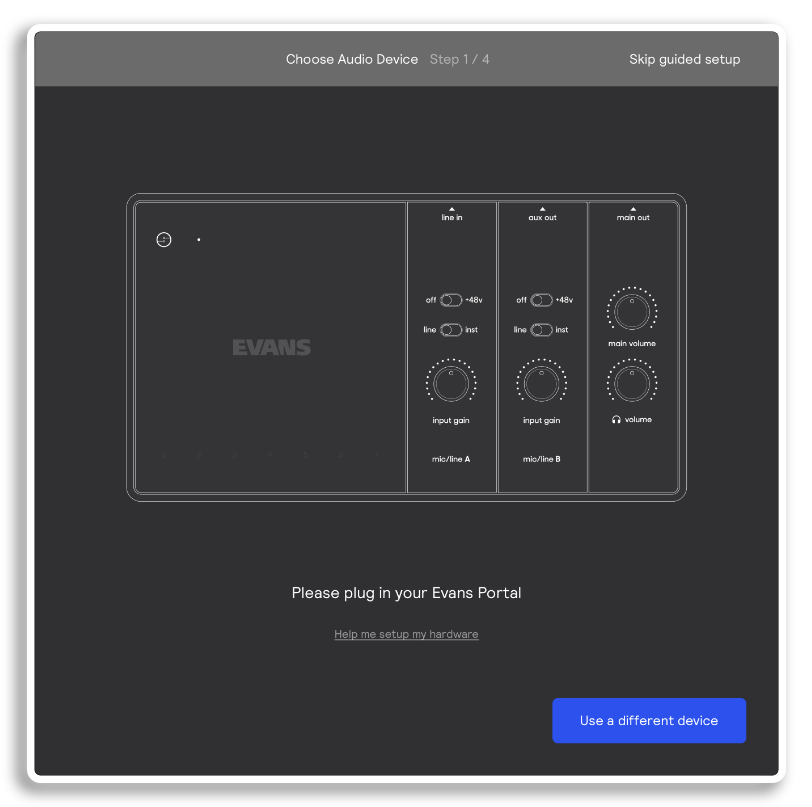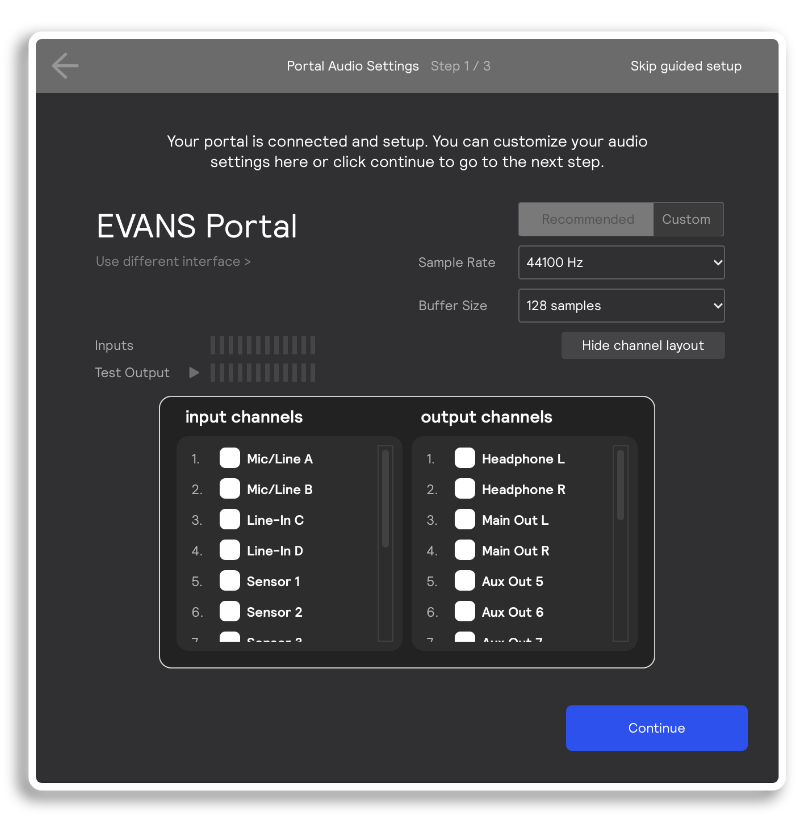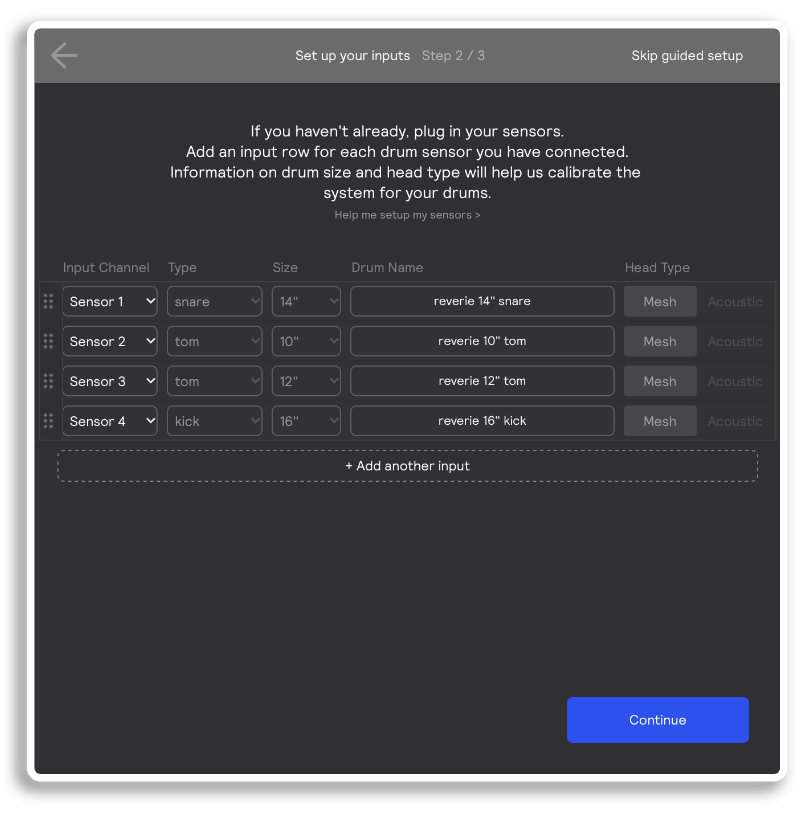Getting Started in the Software
The first time you open Sensory Percussion, you'll be asked to log-in to the software. Use the email & password you made when you registered the software in the last step. If you forgot your password, you can reset it here.
If you haven't already, connect your EVANS Portal Interface. The software will automatically detect it once it's connected and switched on. If you don't have your Portal with you, you can use "Use a different device" to select a different Input/Output device.

Audio Settings
Once it's connected, you'll see the Audio Settings page. Sensory Percussion has recommended settings for active channels, sample rate, and buffer size. If you'd like to customize these options, you can do so by choosing your Sample Rate and Buffer Size from the drop downs clicking the Show channel layout button. The input and output VU meters are visual indicators of your signal levels.

The channel layout view lets you enable or disable different input and output channels.

You can access these settings later by clicking the gear icon in the bottom-right corner of the software (or press ⌘ + ,) to open the audio settings panel.
Hardware Inputs Setup
The next page will ask you to set up your hardware inputs. These represent your physical drumming setup -- so you'll want to add one hardware input per sensor you have connected to a drum. You can add more drums, as well as analog inputs like vocal mics, from the hardware in/out panel after you finish the Guided Setup.

Training your drums
When you reach the drum training page, you'll get a brief tour of the different parts on the screen. Refer to the Drum Training page for a more in-depth look at how all these settings work.


Sound zones on the drum are divided into 3 levels -- from most common to least. We recommend training the minimum number of zones you will use on each drum. It's great to start with the four zones in Level 1, and if you'd like more zones, add Zones 2 and 3 later. For other tips on training, visit this page on the V1 manual.
When you're done training, start playing! A Demo Session will be automatically loaded with several great sets to get started with. Click on the sets at the top of the software to change up the sounds. Then head over to the Software Overview section to learn more.
